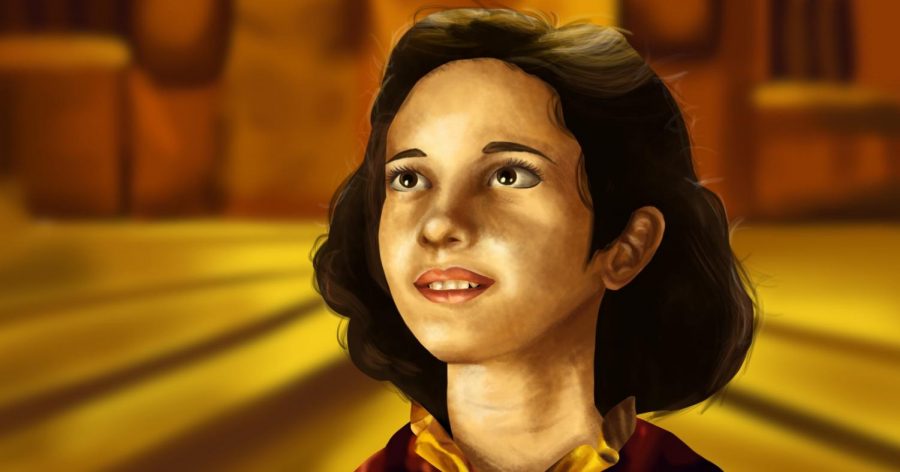A Glimpse Into The Clash Between Evil and Innocence
A Detailing on Why You Should Watch Guillermo del Toro’s “Pan’s Labyrinth” (2006)
September 6, 2019
Within most of us there lies a sense of wonder, a lust for the fulfillment of the imagination. Often, our thirst for the response of creative stimuli is never satiated; though there is one film that’s deservedly commended for its qualities, those of which comply with these needs. Director Guillermo del Toro’s critically-acclaimed masterpiece Pan’s Labyrinth (El Laberinto del Fauno) tests the limits of traditional fantasy, and captivates its viewers with a fantastically violent and dismal tale rooted deeply within the forested heart of Francoist Spain.
The narrative tells of twelve year old Ofelia (Ivana Baquero) being whisked away alongside her mother Carmen (Ariadna Gil), who is in the later stages of pregnancy, to a fascistic outpost within the Spanish woodlands. Here she will come to meet her new stepfather, Capitán Vidal (Sergi López), the imposing leader amongst the fascist troops employed at the station. Almost immediately upon her arrival, Ofelia encounters an ancient faun who informs her of her status as the lost Princess of the Subterranean Realm. From here on out, Ofelia finds herself set on a quest to shed her earthly coil and be exalted back into immortal royalty; she’s to accomplish this through three separate tasks provided by the faun, all of which she must complete while involved in the civil strife which plagued the Spanish countryside during the nineteen-forties.
Guillermo del Toro positions Ofelia betwixt the worlds of fantasy and reality, leading to a story that breaks the boundaries found in traditional tales. Our protagonist wanders through dimensions wrought with primordial magic, only to soon find herself amidst the gunfire and explosions which originate from the conflict between Spanish rebels and fascist soldiers.
The film has often been compared to a children’s tale for grownups, as del Toro displays the harshities of both the worlds of fiction and actuality. Ofelia, in youth, is exposed to the monsters that lurk within the deepest dens of the material plane, but just the same she’s afflicted by her abusive stepfather and the incessant fighting around her.
Unfortunately, there’s ultimately little in the way of a happy resolution for the majority of the conflicts within the story. While avoiding spoilers, it’s appropriate to say that all but a select few characters are struck with an unfavorable fate; those able to find at least momentary satisfaction were nonetheless burdened by the hardships they faced leading up to that point. Admittedly, each character within the story finds themselves sharing at least some small victory.
Beyond this, the beautifully crafted film is constructed through eloquent and fitting dialogue, as well as gorgeous and vivid imagery. The entirety of the film is in Spanish (though it is accompanied by English subtitles), and it was shot in the Guadarrama Mountains in Central Spain. A vivid color scheme of blacks and pale blues contrast blissful moments of flaky golds and oranges. The cinematography is consistently aligned with the flow of the films plot, following both moments of serenity and brutal combat.
Pan’s Labyrinth’s complex characters drive the narrative beyond all else. The unusual creations of del Toro’s special effects teams are emotive in the way they look, the noises that they make and the ways that they move. The faun (who was wonderfully made animate by actor Doug Jones) especially comes off as an intimidating yet welcoming character due to an effective combination of his general appearance and the varied vocalizations that accompany it.
The human characters within the story all have their own motives, and express their own opinions as well as emotions. Ofelia is innocent and filled with youthful vigor, only wanting the best for her family and the good people around her. While she’s persistent in attempting to transcend to near godhood, she’s selfless to the point in which she’s willing to give up this opportunity for the safety of her remaining family alone.
On the other side of the spectrum, there resides Ofelia’s barbarous stepfather, Vidal. Vidal’s character is unique in that he forms a fairly compelling anti-villain, perhaps a less recognized role in cinema. Vidal has many admirable qualities, such as his loyalty towards Francisco Franco’s Regime in the idea that it will bring order and unity amongst the Spanish populace; he proves on multiple occasions that he’s quite willing to sacrifice himself for this cause, running headfirst into firefights. Vidal also has [limited] respect for those who oppose him, such as Doctor Ferreiro (Álex Angulo); he’s willing to show initial restrain towards abusing Ofelia. Nevertheless, Vidal proves himself to be at a general loss of humanity as he murders all who stand in the way of his personal goals without mercy. This leads into one of the main themes found within the story, and perhaps what’s made it a popular subject of amateur video-essays.
There’s a blurred, yet recognizable clash between the “evil” characters in this film and the innocent heroine which we’ve come to root for. Ofelia is but a hopeful child thrust into the midst of an immeasurably dangerous conflict, and surrounded by adults so accustomed to the bloodshed that they’ve grown ignorant of their own follies in continuing to fight for repetitive causes. While she’s able to narrowly escape the solitary beasts from times past, none of which display any semblance of human capacity, she’s not as easily able to outrun or outsmart the human “monsters” which she’s been forced to face in the real world.
Ofelia’s conflict with Vidal represents perhaps the age old concept of light versus dark, good versus bad. Her benign and innocent nature contrasts beautifully with the truly monstrous acts of violence carried out by her stepfather.
These aspects of Pan’s Labyrinth are but select examples from the complete work which add weight to it’s garnered critical praise. Though I could make an effort to describe each individual theme present within the films run time, or elaborate further on the lavishly detailed landscapes and set pieces. It’s likely best to just view the film in its entirety on one’s own accord.
To end here would be to do a disservice to one remaining massive aspect of the film, that being the fact that the entirety of the film is in Spanish. I mentioned earlier that the film is in Spanish, and that it’s presented with English subtitles; this remains true, but I can quite literally say that there is in fact [suitably] not one English word spoken in the film’s run time, there also exists no official English-dubbed version of the film.
Though some may be skeptical, I’d like to argue that this is both a major testament to the quality of the film, as well as a boon to any burgeoning Spanish students.
Guillermo del Toro was undoubtedly faced with the decision to either film/dub the movie in English to appeal to the North American market, or to present the film entirely in Spanish, observably he chose the latter. This is only fitting, as the film does take place within Central Spain during the late forties. Contrary to what would be expected, he decided to make a gracious accommodation for his English-speaking audiences anyways, as he personally transcribed the entire set of English subtitles for the film to his liking. It may not be observable to some, but I’d argue that del Toro’s dedication to his work in this sense warrants recognition and praise.
Pan’s Labyrinth did relatively well in North America even when including the fact that it was exclusively in Spanish, grossing a profit of $37,634,615 in the U.S.A. and $83,258,226 worldwide. This of course opened it up to U.S. audiences, which in turn also brought the film to the attention of students within U.S. school systems. The ability to watch a mainstream film, of such pristine quality, that was still entirely in Spanish acted then as well as now as a tool of practice for Spanish students.
On a final note, if you’re feeling truly masochistic, I wholeheartedly recommend turning off the English subtitles and experiencing the sense of immersion that comes with watching the film in its native Spanish format without assistance. It’s a treat.





